MARKET OVERVIEW
The Global Hot Chocolate market is a dynamic sector within the broader beverage industry, which holds a unique position based on its cultural significance, diverse product offerings, and growing consumer preferences. The market extends far beyond traditional understandings, encompassing an expansive array of innovations, consumer behaviors, and regional influences that continue to redefine its scope. Rooted in centuries-old traditions, the industry has evolved from being a simple comfort beverage to an upscale product category catering to the growing tastes of a vast, expanding audience. The market is experiencing changes not only in the form of products but also in the nature of experiences offered.
Artisanal creations, indulgent flavors, and health-conscious alternatives are redefining consumer expectations. The rising emphasis on ethical sourcing and sustainable practices will likely make this industry even more complex. Producers are increasingly adopting traceability and transparency to meet such demands, as well as in response to the needs of a more informed and discerning consumer base. The ability of the market to address such nuanced expectations will continue to be an important factor in determining its trajectory. Cultural diversity heavily impacts the Global Hot Chocolate market since each region adds something unique in flavor, preparation methods, and consumer rituals. While Latin America will have its old recipes, that is, distinct from the European premium ones, the Asian market is coming up with products that use the local ingredients available to appeal to regional palates. This cultural infusion alone broadens the product range, but it further enhances the market's adaptability across global territories.
In such an industry, technology will continue playing a transformative role. Manufacturers are likely to keep trying new forms of production as well as novel ingredients. While this industry could go on and increase its range by including more plant-based options as well as functional parts like adaptogens and superfoods, packaging will be another very vibrant development. Sustainability as well as convenience will be on the forefront when it comes to innovations. Consumer priorities would shift towards single-serve formats, biodegradable materials, and smart packaging. The current shift towards direct-to-consumer strategies and the use of e-commerce platforms are reorienting the approach of the Global Hot Chocolate market towards the consumer.
Advancements in digital marketplaces enable brands to reach niche markets while utilizing data analytics for a more targeted approach to marketing. Seasonal campaigns, limited-edition offerings, and subscription services will continue to rise as a way for marketers to establish closer bonds with their consumers. Brick-and-mortar establishments will follow, making room for experiential marketing like hot chocolate bars and interactive tasting events in order to increase foot traffic. While established players will remain dominant, the emerging brands and artisanal producers are expected to find significant niches. This dynamic will foster healthy competition and encourage diversification within the market. In addition, partnerships with other sectors, such as confectionery and wellness, will create synergistic opportunities, enhancing the overall consumer experience.
As the Global Hot Chocolate market emerges, it could be an alliance of tradition with innovation. Along with increased importance on quality and sustainability and diversification of different cultures, industry will re-contour itself through a medium attractive to both old enthusiasts as well as beginners. Its aptitude to guess and respond with these changes will decide whether it would land in the horizon of beverages worldwide.
Global Hot Chocolate market is estimated to reach $72,824.40 Million by 2032; growing at a CAGR of 16.8% from 2025 to 2032.
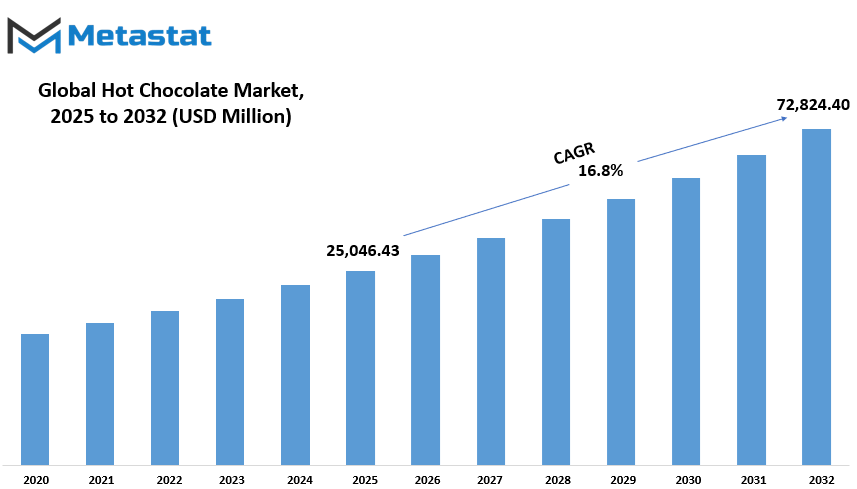
GROWTH FACTORS
Presently, the global hot chocolate market is growing significantly because of the shift in preferences and the increasing demand for specialized beverages that are cocoa-based. There is significant growth since premium and artisanal hot chocolate is trending. Basically, this rise is because most people are in search of advanced and exclusive products with distinct flavors and indulgence. Furthermore, demand for functional and organic hot chocolate drinks is growing, since people are now searching for healthier and more sustainable diets in their everyday lives.
The promising outlook has some challenges that could hinder the progress of the market. Fluctuating prices of cocoa are one of the biggest issues, which directly affects production costs and the final price of hot chocolate products. These variances can thus become difficult both for manufacturers as well as the consumer. Apart from this, sugar levels present in the old-school hot chocolate make it questionable, as nowadays individuals are being quite conscious regarding health issues. Hence, the market's potential growth will depend on their addressing these limitations accordingly.
Fortunately, on the flip side, industry innovators seem to find their opportunity here with rising demand of hot chocolates free of plants as well as minimal sugars. But there is hope for the industry. With an increasing interest in plant-based and low-sugar alternatives to hot chocolate, the door to innovation has opened wide. These products appeal to the health-conscious consumer who is willing to indulge in hot chocolate without sacrificing dieting goals. Plant-based variations, prepared using non-dairy milk or another alternative, can be very appealing for consumers with a lactose intolerance or those leading a vegan lifestyle. Low sugar versions provide a possible solution for individuals concerned about their sugar intake but yet wish to retain the comforting hot chocolate taste.
Adaptability will, therefore be the future of the global hot chocolate market. For that reason, any investment in creating new products and packaging will increase their chances of grabbing market shares. Companies have been able to build a firmer hold in this market by making countermeasures on the variability in the price of cocoa and concerns on health. As consumer trends continue to evolve, the market presents a great growth opportunity, led by creativity and a commitment to meeting the diversified needs of the audience. Such a combination of challenges and opportunities paints a dynamic picture of the industry's prospects in the years ahead.
MARKET SEGMENTATION
By Type
The global hot chocolate market has seen a great increase in recent years, due to the rising demand for comforting beverages and the trend of indulging in specialty drinks. Hot chocolate is not just a beverage; it is a treat that combines warmth and flavor, making it a popular choice among consumers of all ages. It can be broadly categorized into three main categories: powdered hot chocolate mix, ready-to-drink (RTD) hot chocolate, and hot chocolate pods, which provide for various choices and lifestyles.
Hot chocolate mix in powdered form is the leader in the market, with a value of $17,534.65 million. Consumers prefer this version because it's convenient and they can adjust its sweetness and richness according to their taste. Both at home and in cafes, powdered mixes provide the flexibility that people need. Milk or water is added for a perfect, savory hot chocolate.
RTD hot chocolate is another fast-moving segment, prepared for those wanting instant gratification without sacrificing the taste. In bottles or cans, this product perfectly fits busy lifestyle seekers of a convenient, tasty beverage. As RTD hot chocolate gains more traction, premium ingredients and innovative flavors attract younger customers, who respond well to a balance of convenience and quality.
Perfectly suitable for use in single-serve coffee machines, hot chocolate pods represent a hassle-free preparation solution without loss of flavor. It has been highly sought after as single-serve brewing systems continue to increase due to convenience and consistent outcomes. They appeal to modern households and workplaces that value quick solutions.
The attractiveness of hot chocolate lies in comfort but with flexibility towards the current consumer needs. The market from powdered mixes through the innovative options in RTD, pods continues to evolve according to diverse needs and preferences of the consumers. The different options contribute to a bigger growth as people increasingly indulge in hot chocolate as a convenience drink.
This growing market reflects the universal love for hot chocolate, demonstrating how a simple beverage can adapt to changing lifestyles while maintaining its timeless appeal. The market’s ongoing expansion suggests that hot chocolate will remain a beloved choice for years to come.
By Packaging
The global hot chocolate market is expanding at a steady pace due to growing consumer demand for warm, indulgent beverages, especially during the colder months. The various types of packaging that are now available to consumers contribute to this growth, as different preferences are met with the variety.
Among the types of packaging options available in the market are sachets. Sachets are small, single-serve packets that are very convenient for on-the-go consumption. They are particularly favored by consumers who want to enjoy a quick cup of hot chocolate without the hassle of measuring or preparing larger quantities. Sachets are easy to store, transport, and are available in various flavors, making them an ideal choice for busy individuals. They also have compact sizes to suit those who don't need more to be filled. That makes them much more convenient to use for houses, offices, or travelling around.
Tins specifically target those with a higher preference for more amounts of hot chocolate mix. The tins appear to be a high-end packaging as most of its users believe they are only of the finest qualities. Tins are ideal for homes or businesses that consume hot chocolate frequently. Tins are stronger and store the product fresh for longer time, and also reusable, so they are environment-friendly for many consumers. They are available in larger sizes to be consumed over multiple servings and, therefore, economical for people consuming it regularly.
The bulk packaging segment is another large market in the global hot chocolate market. It is very popular among retailers, cafes, and foodservice providers. The ability to buy large quantities of hot chocolate in bulk packaging means businesses can purchase this product in high volume, reducing the cost per unit. This also reduces waste because a higher volume of product is used for more servings or batches at once. For example, bulk is the most loved by most commercial businesses that relate to large amounts of customers to be served for instance in the hotels and restaurant industries.
Among the other package types that have not been defined as sachet, tins, or bulks are found. These other groups include glass bottles, pouch, or cardboard packets. Though rarely used, there is still its contribution to making variety in the marketplace as it ensures that there would be a diverse choice for particular consumer preferences.
The global hot chocolate market is actually doing well; therefore, this means that depending on the preferred packaging, one can get to have whatever suits his taste. These include sachets, premium tins, and bulk packaging in general.
By Flavours
The global hot chocolate market is one of the most popular and growing markets. This market provides different flavors to consumers based on their preference. Among the most widely consumed options, hot chocolate is mainly categorized into three key flavors: dark chocolate, milk chocolate, and white chocolate. Each of these types brings its unique appeal and taste experience, contributing to the market's growth and diversity.
Dark chocolate is definitely a favorite by many, simply because of their preference for richer and intense tastes. Being with high cocoa percentages, dark chocolates are known for bringing out bittersweet tastes since they do contrast with the typical sweetness of milk chocolates. This variant gained popularity, especially nowadays, because there are those interested in healthier, antioxidant-rich contents. The demand for dark chocolate hot drinks is increasing as people become more aware of its potential health benefits.
Milk chocolate is, however the most common flavor of hot chocolate and hence consumed by most people. The creamy sweetness consumed by children and adults alike has resulted in it becoming the comfort drink, especially in cold months. This set of milk chocolate gives a smooth texture, with a perfect balance of sweetness, giving a more palatable flavour which might be sweeter and less intense as compared to dark chocolate.
Other prominent flavors in hot chocolate include white chocolate, although white chocolate is technically not a real form of chocolate but is rather formed from cocoa butter, missing cocoa solids like milk and dark chocolates, making white chocolate taste full of cream with undertones of vanilla. The smooth and luxurious flavor of this type of chocolate gained popularity over the years, with many consumers looking for something lighter and sweeter than traditional chocolate varieties. Its unique taste and texture made it a hit among those looking for novelty flavors.
As consumer preferences change, it is evident that these three main flavors—the dark, milk, and white chocolate varieties—are the top offenders in the global hot chocolate market. Each option brings something unique to the table, so there is sure to be something for everyone. Variety within the market allows for continued growth and innovation as brands look to new ways to meet the demands of hot chocolate lovers worldwide.
By End User
The international market of Hot Chocolate is also diverse since its growth is contributed by various types of end users. The first category is the residential or household sector, in which people enjoy hot chocolate at home in the comfort of their own house. This comprises individual or family purchasers who buy hot chocolate products from supermarkets, online retailers, or specialty shops to make beverages at home. Preparation of hot chocolate at home has become very convenient, especially for colder months or as a comfort drink. This has also added to the rising demand for it in households. The growth in e-commerce allows consumers to shop for various brands and flavors easily, which enhances the demand further.
The most significant end-users are cafes and coffee shops. Such establishments are recognized for their provision of a variety of beverages, and hot chocolate is a standard on their menus. Many cafes serve hot chocolate in addition to other popular drinks such as coffee, tea, and specialty lattes. Consumers go to these cafes not only for the atmosphere but also for the convenience of having a ready-made, high-quality hot chocolate prepared by skilled baristas. This segment has been gaining because cafes have been experimenting with different flavors, toppings, and combinations. The popularity of hot chocolate is gradually the trend among people of all ages due to the ability to customize hot chocolate with added flavors such as caramel, mint, or whipped cream.
Restaurants and hotels are also major players in the global Hot Chocolate market. Hot chocolate is usually served at restaurants as a dessert product, particularly during winter periods or holidays. Hotel chains with luxury or boutique services usually offer hot chocolate within their in-room services or lounges. These business establishments specifically cater to customers who are looking for a drink that would be relaxing and indulgent, and hot chocolate is just the perfect fit for the bill. The growing interest of the hospitality industry in unique and memorable guest experiences makes specialty hot chocolate options an attractive feature.
In conclusion, there are various end user segments in the global Hot Chocolate market, which have helped in growing the popularity of hot chocolate. From the household enjoying a warm drink at home to the cafes offering different customizable options, to restaurants and hotels serving this indulgent beverage as part of a memorable experience, the market continues to expand. With such a wide range of choices and the growing demand for specialty beverages, hot chocolate remains a favorite drink enjoyed by people all over the world.
|
Forecast Period |
2025-2032 |
|
Market Size in 2025 |
$25,046.43 million |
|
Market Size by 2032 |
$72,824.40 Million |
|
Growth Rate from 2024 to 2031 |
16.8% |
|
Base Year |
2024 |
|
Regions Covered |
North America, Europe, Asia-Pacific, South America, Middle East & Africa |
REGIONAL ANALYSIS
The global hot chocolate market can be segmented geographically into the following regions: North America, Europe, Asia-Pacific, South America, and the Middle East & Africa. The key markets in North America are the U.S., Canada, and Mexico. Europe consists of big countries like the UK, Germany, France, and Italy as well as the rest of Europe. Asia-Pacific is one of the developing markets for hot chocolate consumption. Countries included are India, China, Japan, South Korea, and the Rest of Asia-Pacific.
Most countries in South America are concentrated into Brazil and Argentina, while the remaining ones are pooled as Rest of South America. Middle East & Africa is bifurcated into the GCC countries, Egypt, South Africa, and the Rest of Middle East & Africa. Opportunities and challenges that can be specifically related to regional local tastes, climate, and economic conditions drive the global hot chocolate market within these regions.
Geographical divisions help analyze how hot chocolate is consumed around the globe and where demand is growing. Regional preferences on flavors, ingredients, and packaging styles will shape market trends. North America and Europe have traditionally dominated the hot chocolate market. However, market lines are continually changing with growth in Asia-Pacific and South America to further indicate higher consumption levels in the future.
Generally speaking, geographic segmentation by global hot chocolate can provide opportunities in targeting various specific geographies. Because it makes such distinctions in local products and specific regional market targets, business performance would tend to increase due to more opportunities gained within that niche market. Given knowledge about their specific needs, understanding local consumer demands would improve on better servicing this client group throughout diverse geographic terrains.
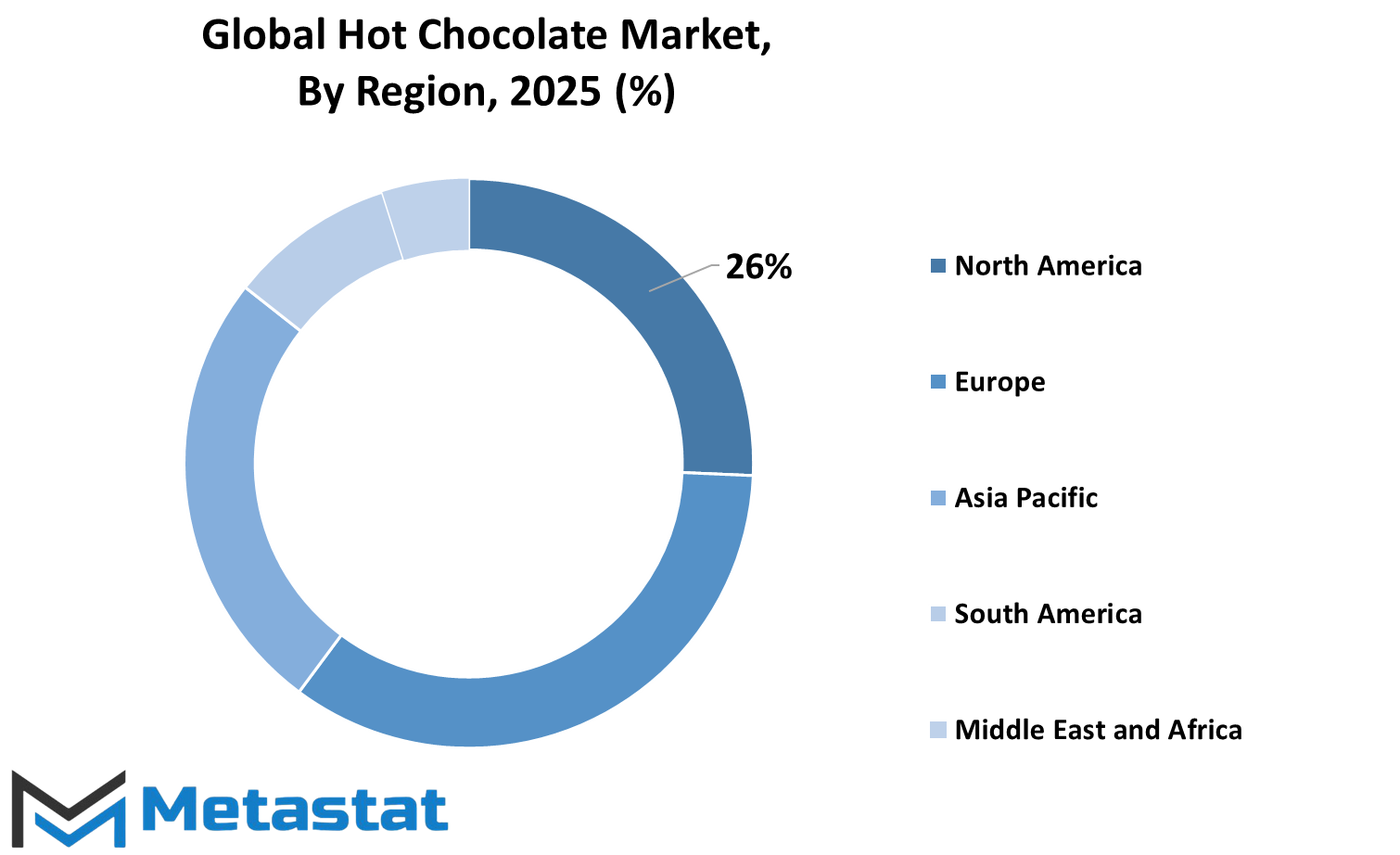
COMPETITIVE PLAYERS
Various important key players drive the global hot chocolate market. However, one among the top players and brands, whose diverse product offerings under the heading of hot chocolate stand out to create a broad horizon in this sector, is Nestlé S.A. Nestled deep with wide reach, excellent products, and strong networking all over the globe, the brand holds the major market position in the country and around the world. Similarly, The Hershey Company, with its signature chocolate products, has grabbed attention from the contemporary consumers throughout the world. Its rich heritage and quality commitment have enabled it to gain an unshakeable space in the market. With numerous options of hot chocolate for diverse tastes, it has been in the business.
Another giant in the field is Mondelez International, Inc. This company is the parent organization behind the brands; Cadbury is one of them. Mondelez is enjoyed by consumers worldwide through its product offerings, including hot chocolates that become a household staple. Starbucks Corporation contributes greatly to this market as well, with its premium offerings and ability to concentrate on using quality ingredients and unique flavors that cater to more of an upper-end consumer demographic. Their products are focused on taste but also on providing experiences for the customers.
Another high-end company that has done its part for the hot chocolate sector is Ghirardelli Chocolate Company. These have ensured offering an excellent experience in chocolate, through the introduction of different hot chocolate blends, with which people respond to the drink if they're seeking something much more indulgent and rich in taste. Barry Callebaut AG is the world's leading manufacturer of chocolate and provides high-quality cocoa and chocolate products to various industries, which include the hot chocolate market. Their vast knowledge in the production of chocolates satisfies the demand for both commercial and consumer-oriented products.
Conagra Brands, Inc., whose consumer groups include Slim Jim and Hunt's, meets various customer requirements by providing the products in hot chocolate. Godiva Chocolatier, Inc., known for its rich chocolates, provides superior-quality hot chocolate products for those customers seeking a more decadent experience. The Kraft Heinz Company, through its brands such as Maxwell House, entered into the market of hot chocolate and sold high-quality products at an affordable cost.
Organic is the niche where Green & Black's Organic holds a position that caters to healthy ingredients in its hot chocolate, therefore taking the lead within the market of hot chocolate. Lastly, the classic Swiss Miss remains a crowd favorite, given its ease and affordability in being prepared as hot chocolate mix. These leading players, which each have a strength and specialty, continue to define the international hot chocolate market by catering to the diverse tastes of consumers everywhere.
Hot Chocolate Market Key Segments:
By Type
- Powdered Hot Chocolate Mix
- Ready-to-Drink (RTD) Hot Chocolate
- Hot Chocolate Pods
By Packaging
- Sachets
- Tins
- Bulk Packaging
- Others
By Flavours
- Dark Chocolate
- Milk Chocolate
- White Chocolate
By End User
- Residential/Households
- Cafes and Coffee Shops
- Restaurants and Hotels
Key Global Hot Chocolate Industry Players
- Nestlé S.A.
- The Hershey Company
- Mondelez International, Inc.
- Starbucks Corporation
- Ghirardelli Chocolate Company
- Barry Callebaut AG
- Conagra Brands, Inc.
- Godiva Chocolatier, Inc.
- Kraft Heinz Company
- Green & Black’s Organic
- Swiss Miss
WHAT REPORT PROVIDES
- Full in-depth analysis of the parent Industry
- Important changes in market and its dynamics
- Segmentation details of the market
- Former, on-going, and projected market analysis in terms of volume and value
- Assessment of niche industry developments
- Market share analysis
- Key strategies of major players
- Emerging segments and regional growth potential




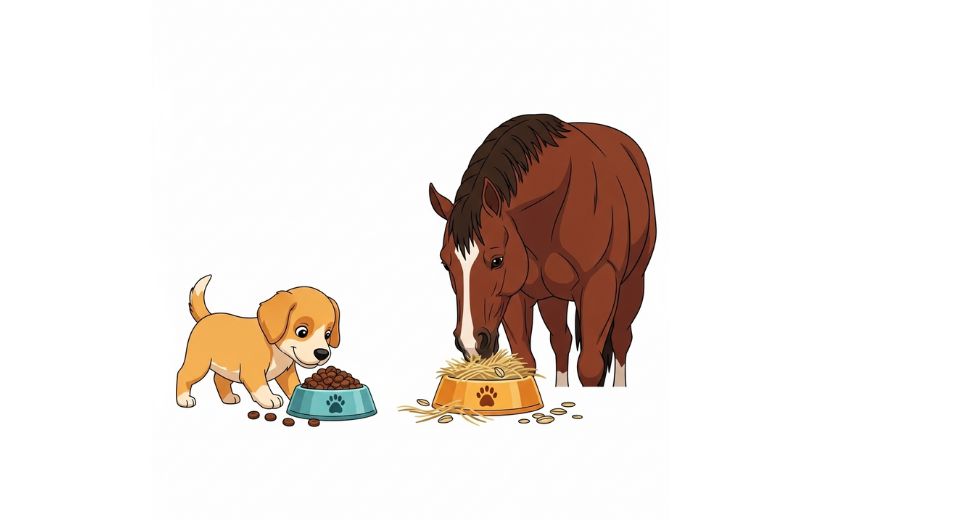
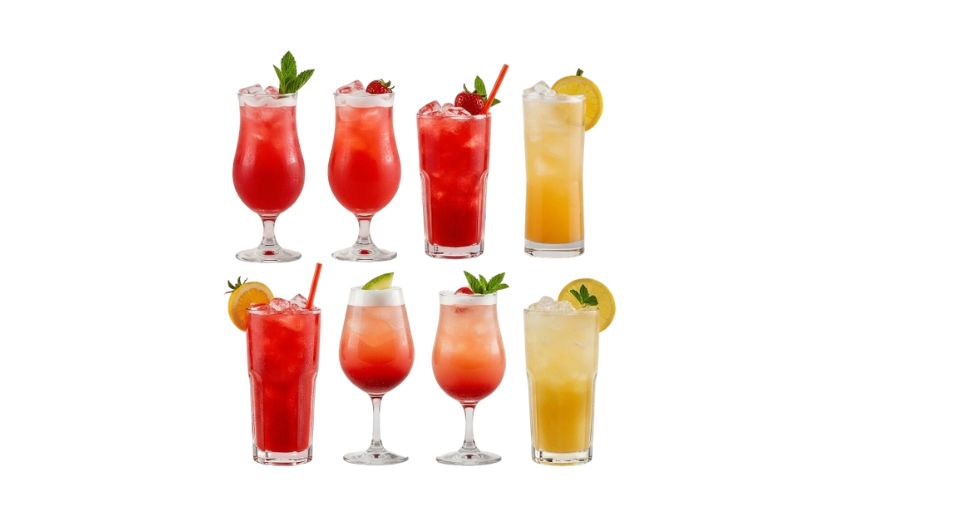
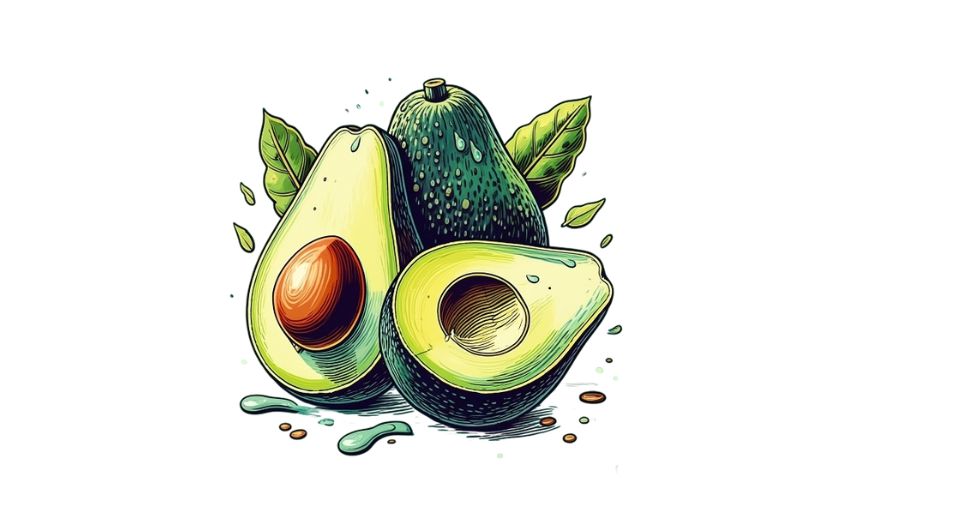

 US: +1 3023308252
US: +1 3023308252






